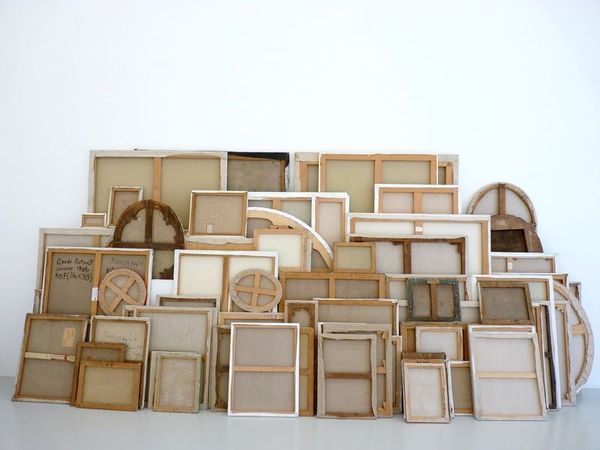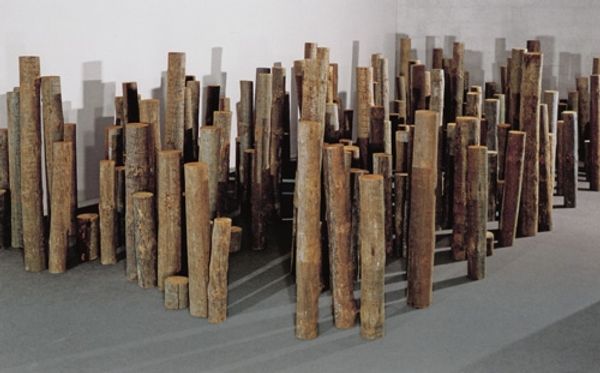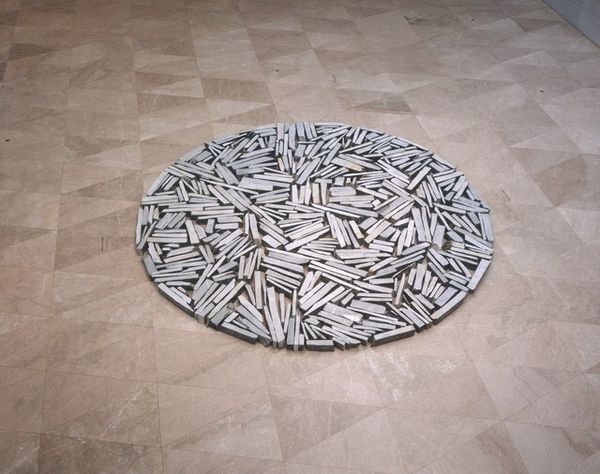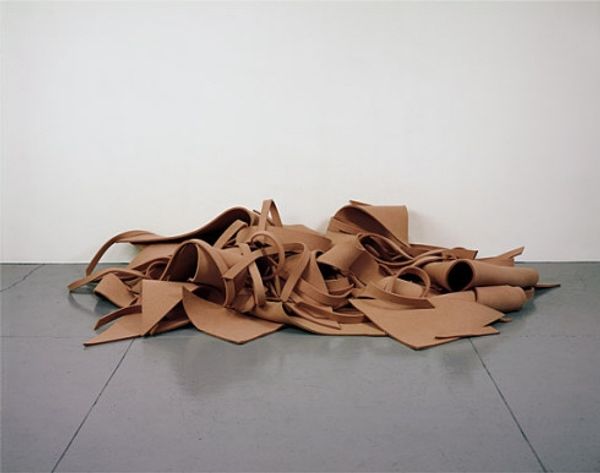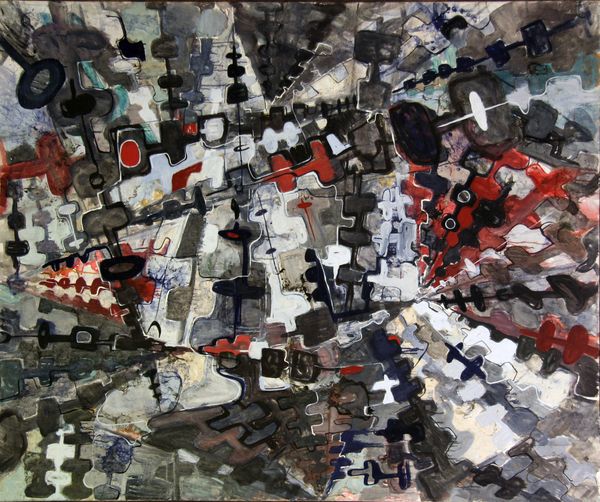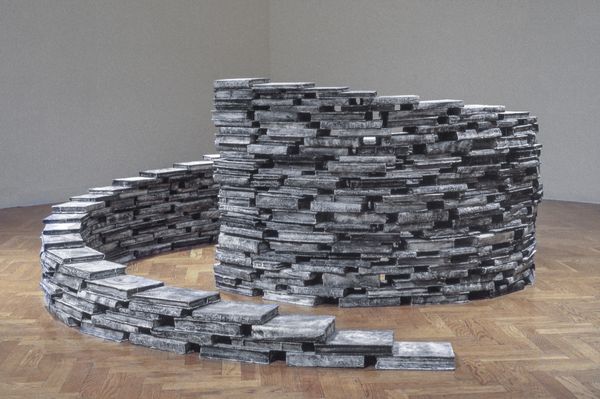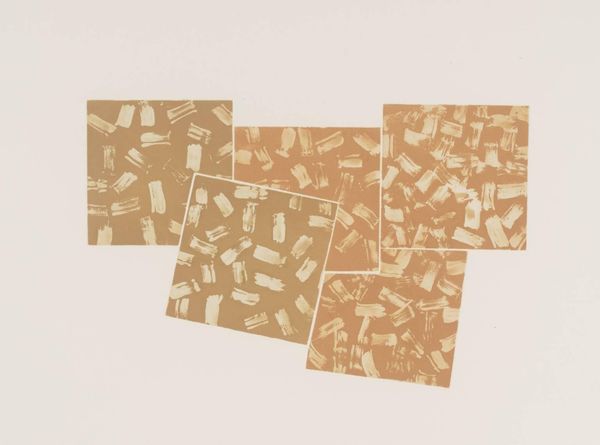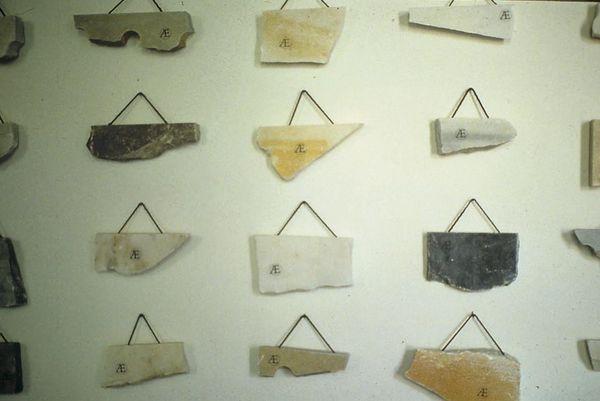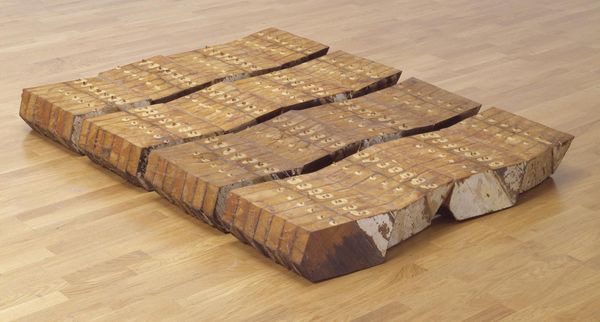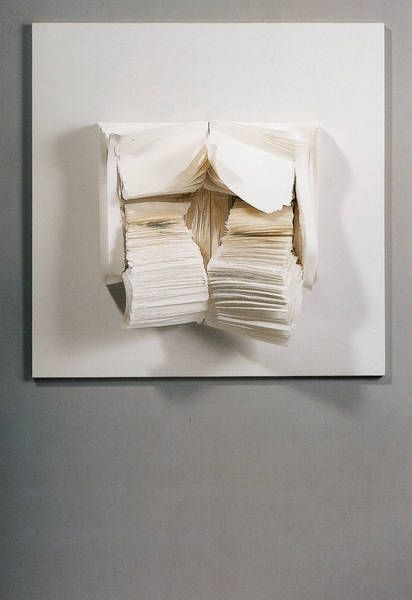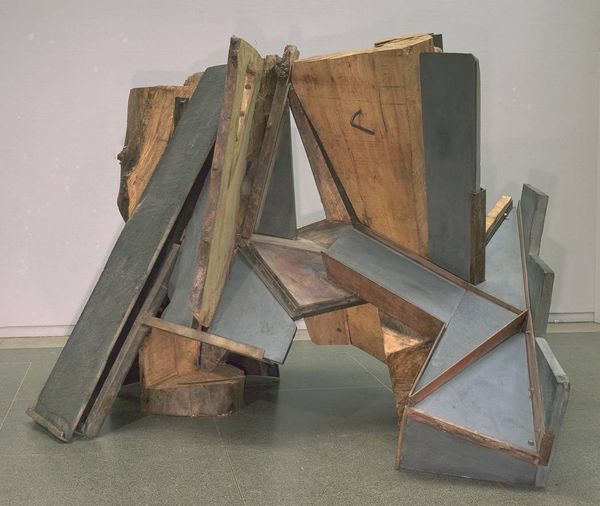
mixed-media, assemblage
#
gouache
#
mixed-media
#
water colours
#
conceptual-art
#
assemblage
#
postmodernism
#
geometric
#
abstraction
#
watercolor
Copyright: Andre-Pierre Arnal,Fair Use
Curator: Standing before us is André-Pierre Arnal's "Opéra," created in 1975, currently housed at the Georges Pompidou Center in Paris. The piece is an assemblage, incorporating mixed media, watercolor, and gouache. What strikes you first about this artwork? Editor: My immediate response is one of quietude. The muted colors and repetitive geometric shapes give off a rather meditative air. It’s almost like looking at a field of subdued origami tiles, scattered with intention, despite the randomness. Curator: Indeed. The accumulation of similar forms encourages contemplation. Arnal's work often uses simple geometric elements to create complex wholes. Consider the symbol of the square – its connotations of stability, of structure. What does the repetition suggest in this context? Editor: That stability becomes destabilized, perhaps? The sheer number of elements suggests a potential for collapse, a fragility underlying the seemingly solid geometric form. I think there is something really potent in the potential for chaos that repetition always seems to hint at. The artist also seems aware of material conditions by choosing what appears to be paper, a material subject to wear and decay. Curator: Exactly. It speaks to temporality and the inherent vulnerability within systems, both man-made and natural. Do you read any further significance into the fact that this work is entitled "Opéra?" Editor: Absolutely. An opera is grand, elaborate, and, despite all the rehearsal, often teeters on the edge of total artistic failure! By contrasting that drama with these quiet, modest components, I wonder if Arnal comments on the labor and fragility inherent in all grand projects? Curator: An insightful perspective, bringing into play notions of scale and expectation. The very muted color choices too; like remnants, faded memories… they’re there but altered by the passing of time. The individual tiles bear those traces, acting almost as containers of individual histories or performances, collectively forming a new narrative. Editor: Thinking about narratives… each fragment’s slight difference might suggest different political moments in the '70s, creating a meta-commentary that questions how history is produced. It seems quite fitting with some of the broader artistic concerns that emerge in Postmodernism. Curator: A vital point, indeed. Art within postmodernism frequently reflects fragmented identities. As we move on, consider how even the subtlest aesthetic choices, such as color and geometric shape, carry deep cultural resonance, opening new doors for interpretation each time the art is viewed. Editor: Exactly. It encourages us to keep questioning narratives of stability in a rapidly changing and complex world.
Comments
No comments
Be the first to comment and join the conversation on the ultimate creative platform.
